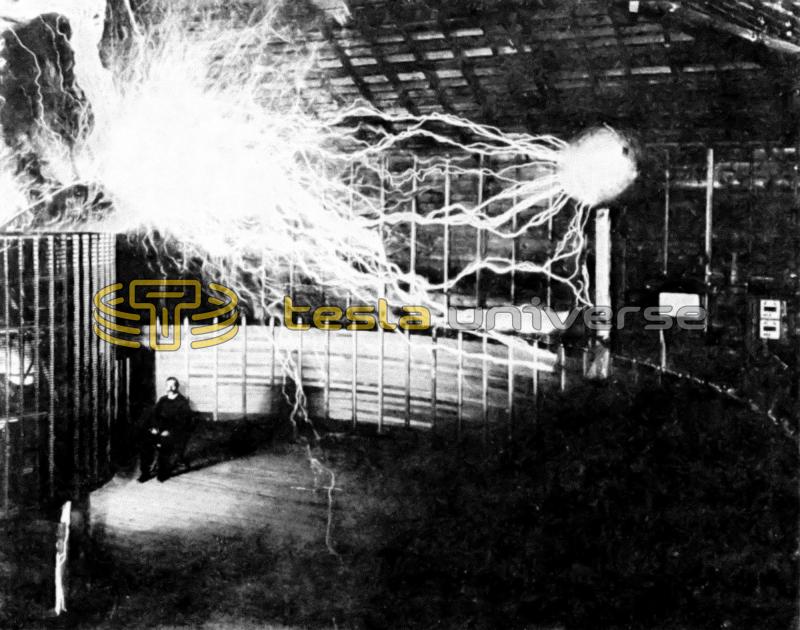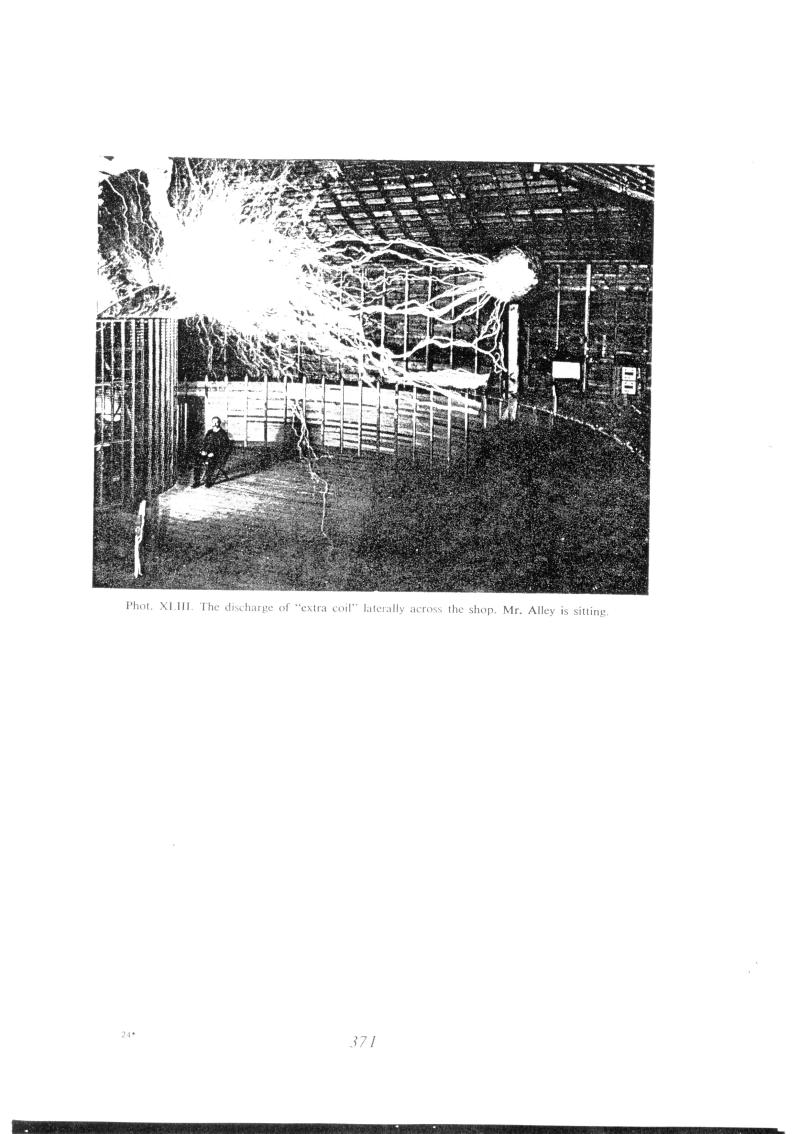
Nikola Tesla Books
ЦвеÑава Ð.Ð. ÐÐÐÐÐРТÐСÐÐ, изд. ÐаÑка, ÐенингÑад, 1974.
January 3
After description of several photographs showing the laboratory on photograph No. 41, he explains some current streamer transformation. He mentions the current streamer division in the vicinity of the floor, the division and repeated merging of the current streamers, the event of brighter current streamer portions (which he calls sparks), and the distraction of the spark into current streamers and "fire-balls". Particularly interesting are Tesla's observations and comment about the creation of "fire-balls", the event which interested people for a long time. Some data about "ball type" lightning have been found even on Etrurian monuments, in the works of Aristotle, Lucretia and others(63).
Ball-like lightning or "fire-balls", as Tesla calls them, are created during weather disturbances and are considered one kind of electrical discharge. The event in nature is very rare, but nevertheless quite a bit of information has been collected on the basis of which several theories have been established on the cause of this lightning. According to some hypothesis, the "ball-type" lightning is an optical illusion (Tesla thought so as well until he produced ''fire-balls''), according to others this is the track of meteors.
Before Arag's analysis of approximately twenty known events of ball-type lightning in 1838, there was no scientific analysis in the real sense. After publication of Arag's work, ball-type lightning entered in the circle of science problems and they remain to this day a partial puzzle.
Ball-type lightning is a bright sphere, which appears during the storm. In most cases it is red in color, but appears in other colors as well; yellow, green, white and blue. Dimensions are various and the mean diameter is approximately 25 cm. As distinct from usual lightning, ball-type lightning moves slowly, and travels parallel to the ground. They could stop and change their direction of movement, and last even to to five seconds. The characteristics of ball-type lightning changes from case to case, and therefore it is considered that there are various kinds of this type of lightning. According to Singer(63), it is considered today that one theory does not give the explanation for all types of ball lightning in nature.
Despite numerous efforts, only some types of ball-type lightning have been partially produced under laboratory conditions. Amongst those are poorly lit balls created after a strike of usual lightning against some solid matter. Tesla several times mentioned similar events caused by spark strike or current streamer against a wooden object (please see e.g., photograph No. 50). According to new theories, ball-type lightning is in fact the plasma area created in nature by means of electrical discharge. Latest research and calculations by Kapica(64), indicate that the light of ball-type lightning is impossible to explain by means of energy which it could contain at the instant of creation, thus for its maintenance external energy should be supplied. Kapica assumed that the external energy is obtained from naturally created electromagnetic fields. In the beginning a small area of ionized gas, created by previous lightning, or some other electrical event during the storn, is increased on account of the energy of an external electromagnetic field. The diameter of the plasma sphere determines the frequency of the external field, and so the resonance is achieved. The most frequent dimensions of fire-balls require electromagnetic fields of 35 to 100 cm wavelength. According to this theory, it is assumed that some role is played by standing waves created by a reflection of natural electromagnetic waves from the ground. This was partially proven by an experimental method, but there are still problems to which even this theory did not provide satisfactory answers. It has been established that for the maintenance of the plasma chunk in the air, the required electromagnetic field power is approximately 500 watts, which is considerably below the possible power present during an electrical discharge. However, there is very little known about natural electromagnetic waves, and therefore on the basis of this limited data, it is not possible to conclude much.
Tesla's hypothesis of the creation and sustaining of fire-balls contains some assumptions which can be found in the newest theories, but it carries the characteristics of the time in which it was established, so, for example, according to Tesla and Kapica, if the initial energy nucleus of the fire-ball is not sufficient for the ball-type lightning sustenance then it is necessary to supply external energy. Tesla exhausts the energy from other lightning which propagate through the nucleus space of the fireball, and the energy concentration he explains by nucleus resistance, or the higher capability of a rare gas in the nucleus to absorb energy from the other gases which pass through the discharge. In nature there is less likelihood of several lightning strikes passing through the nucleus of a ball-type lightning and therefore the Kapica assumption on the action of other lightning strikes by means of an electromagnetic field and standing waves which they create, is more logical. In Tesla's experiments it is possible that there frequently occurs a ''transfer'' of repeated lightning over the nucleus of ball-type lightning.


